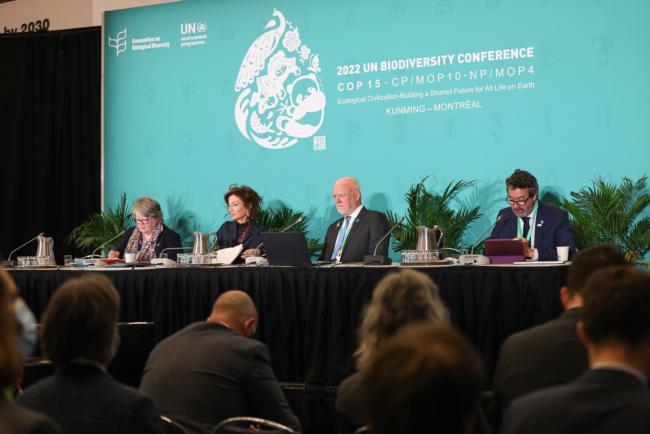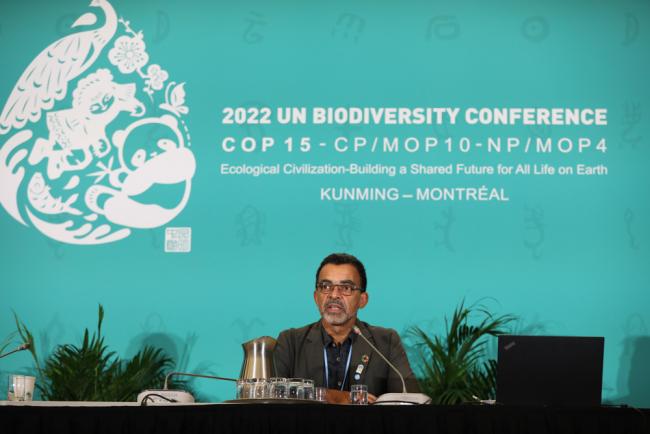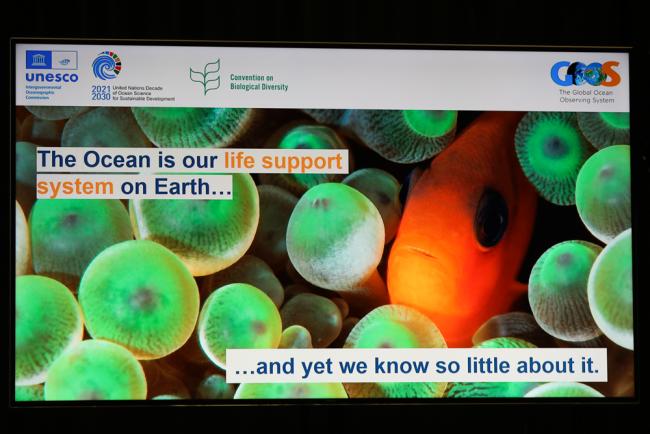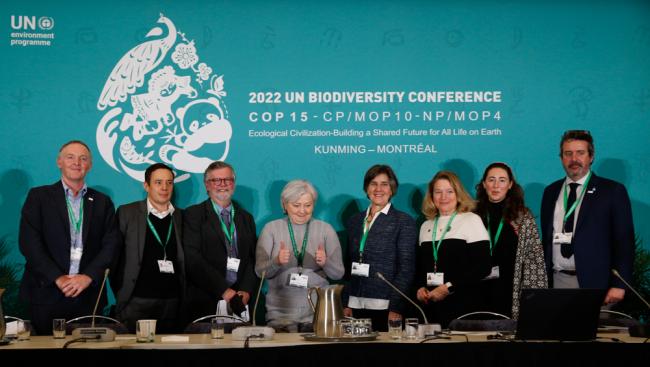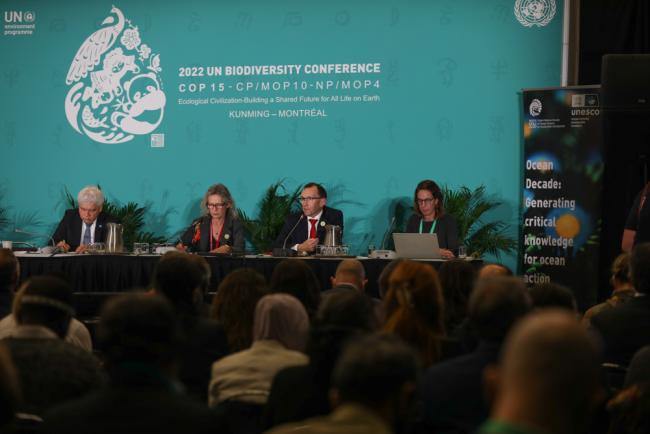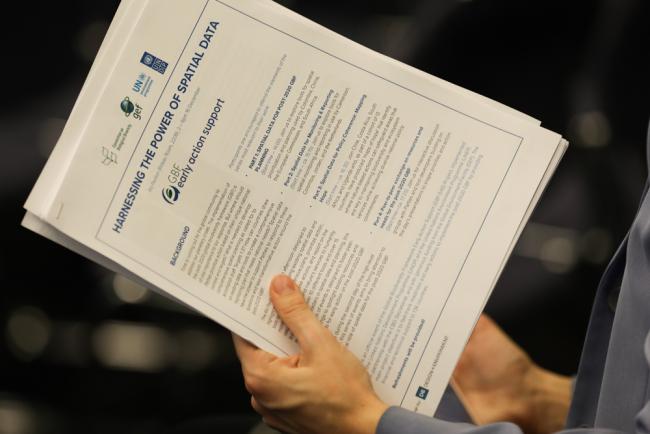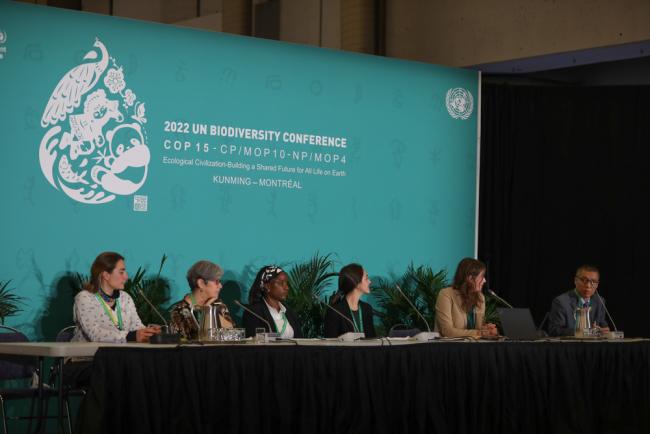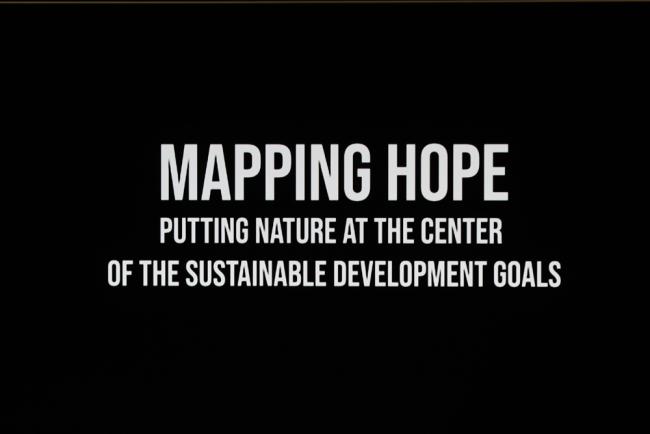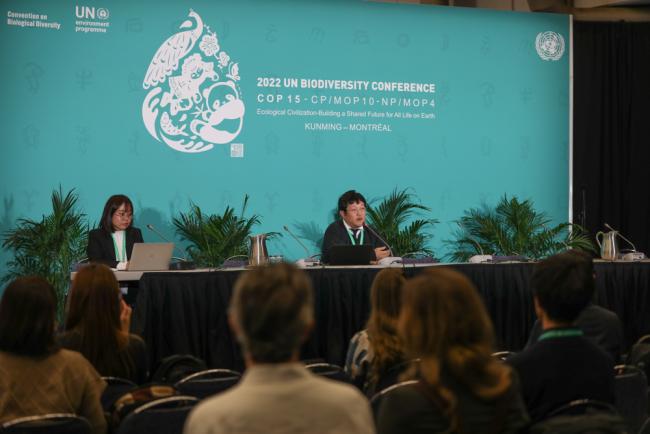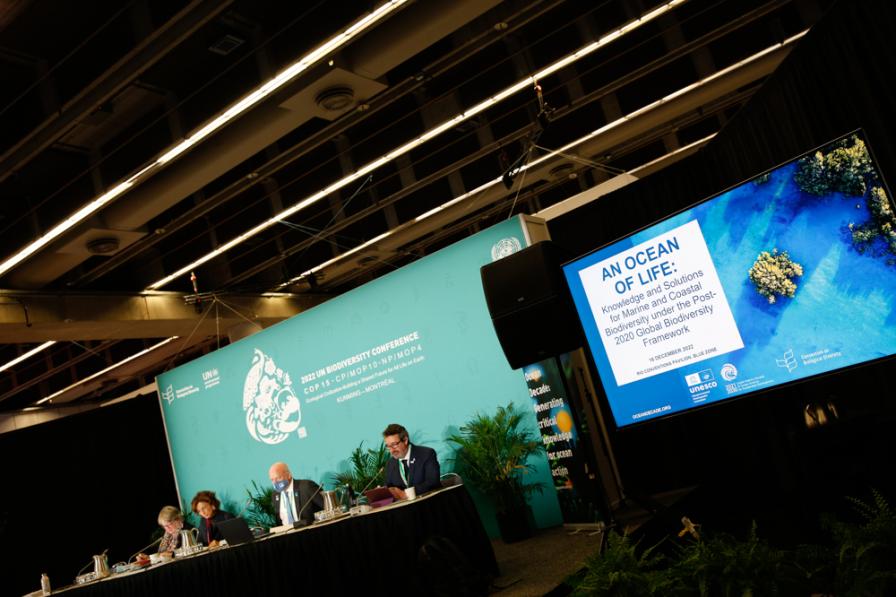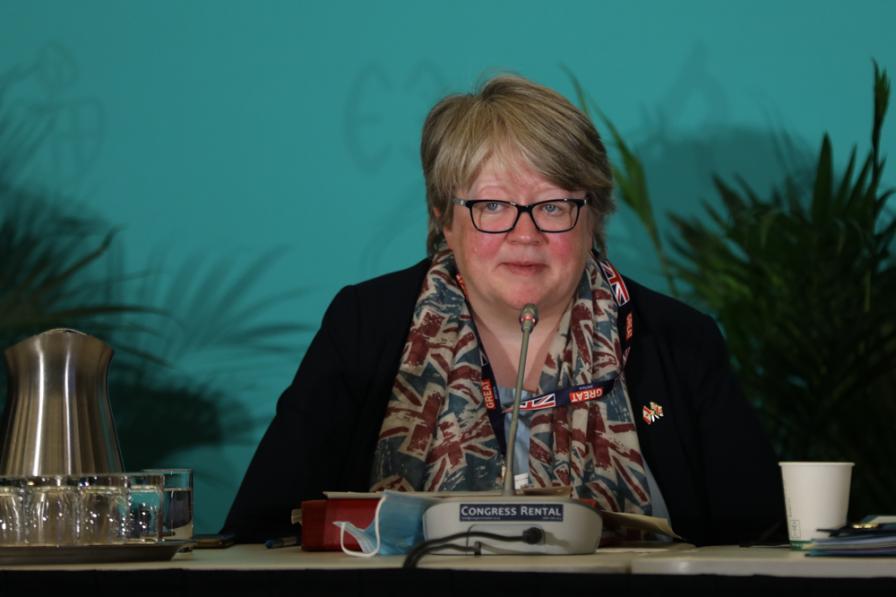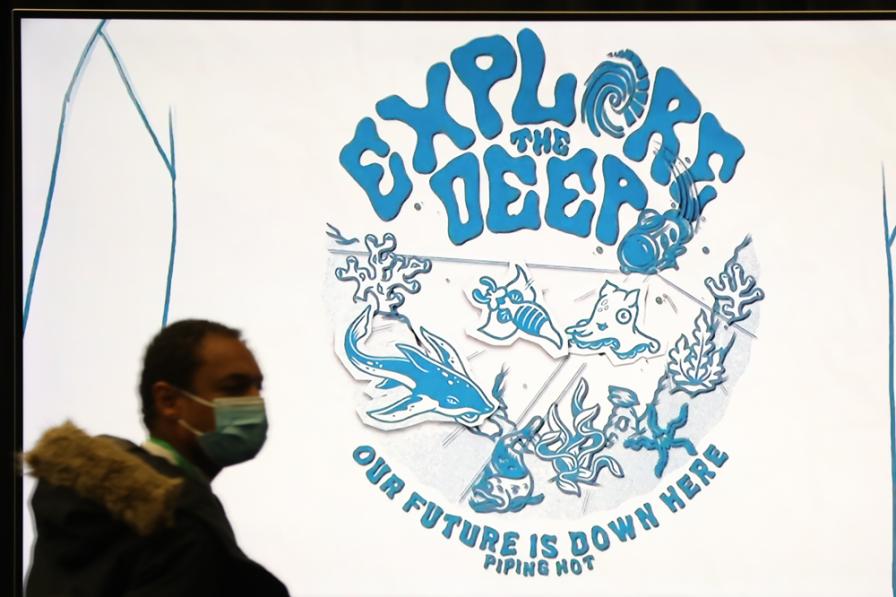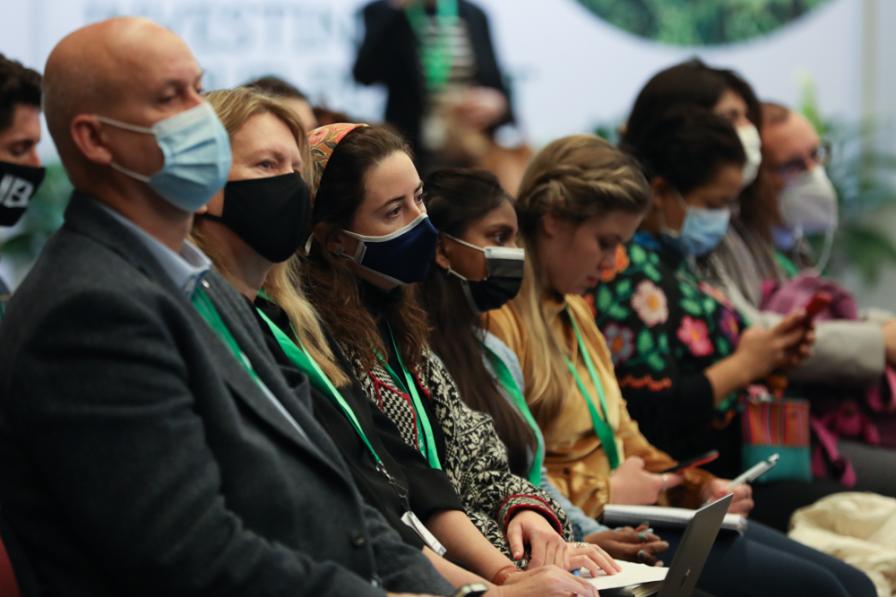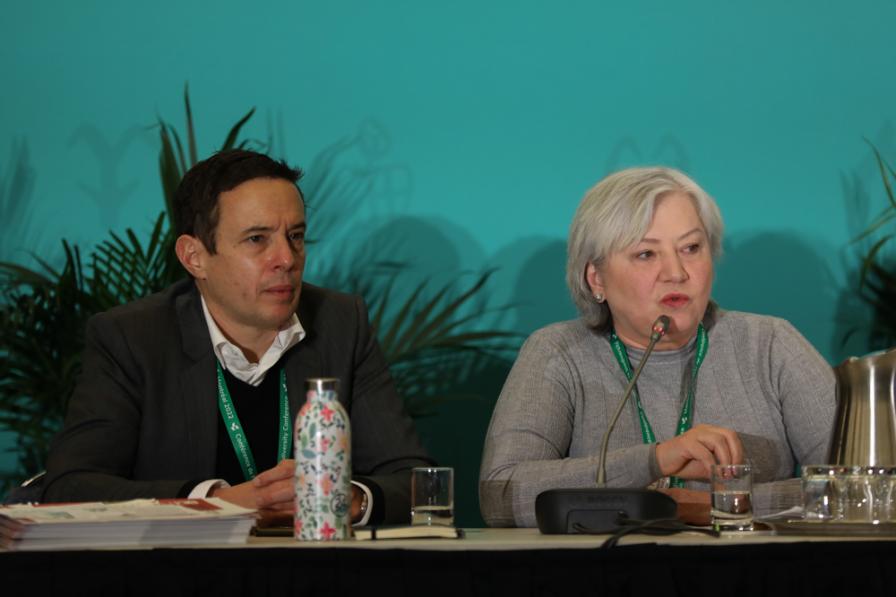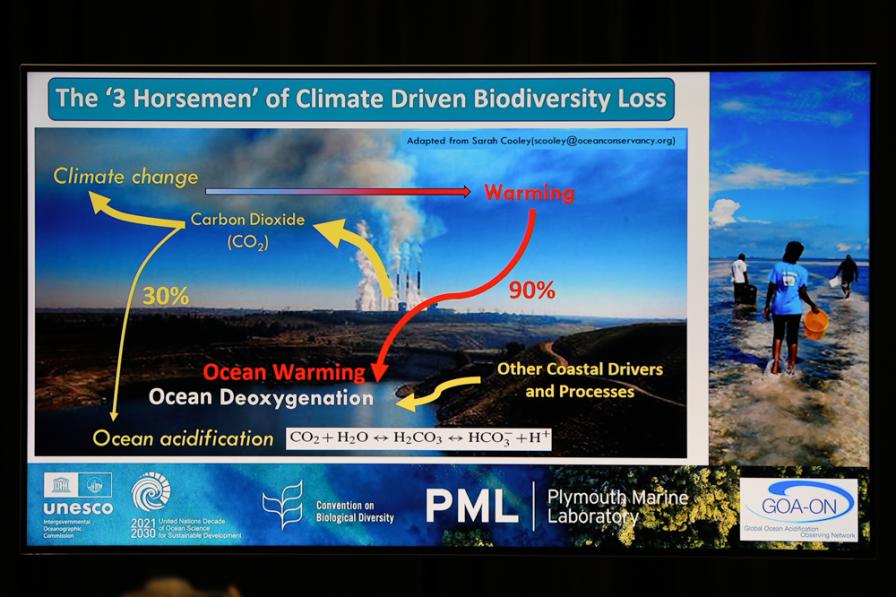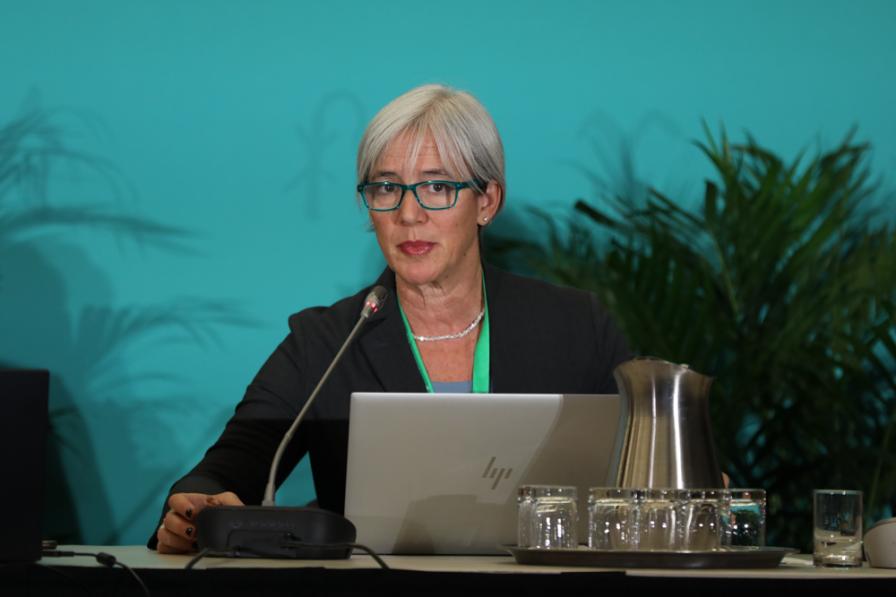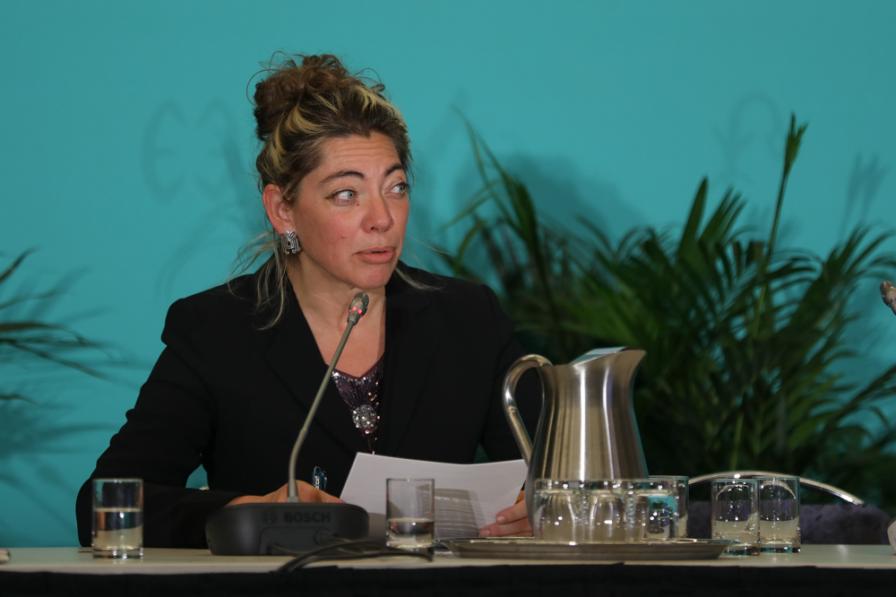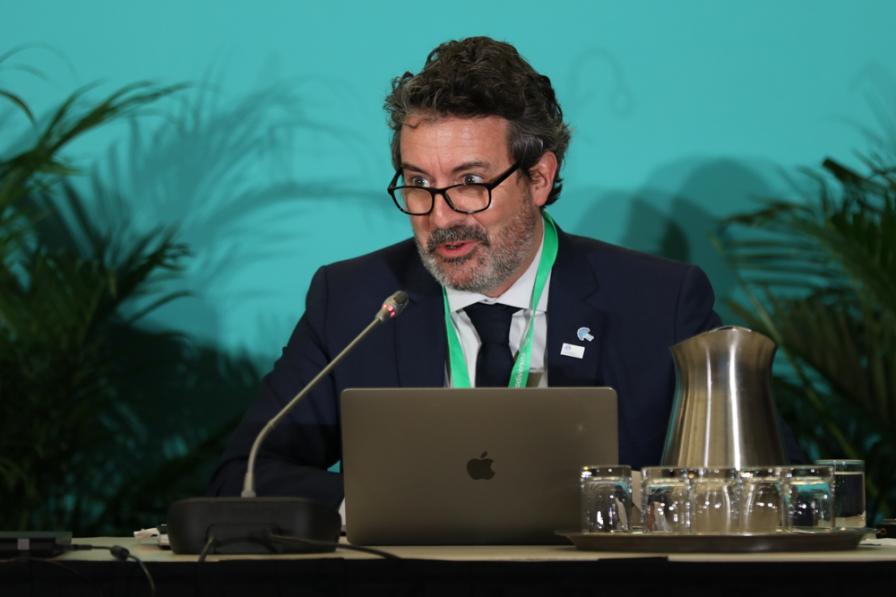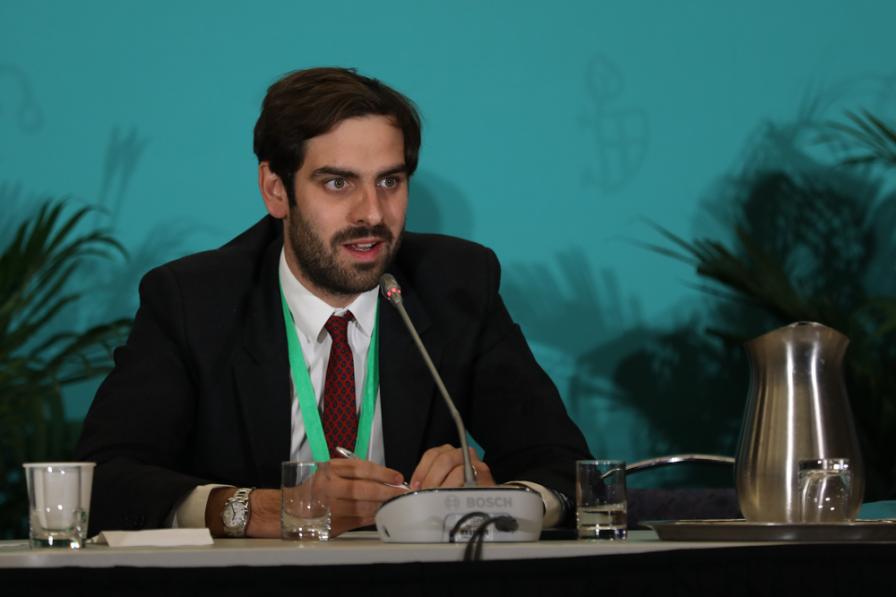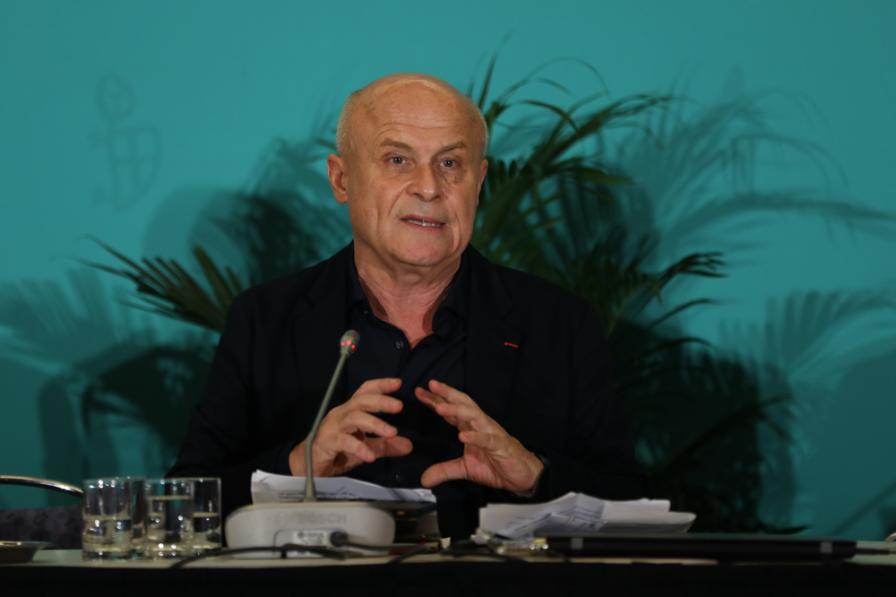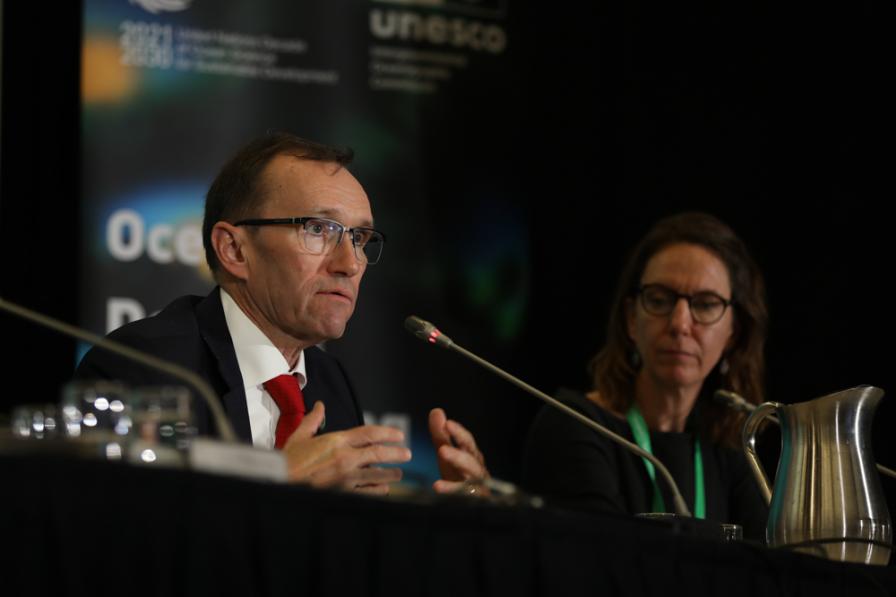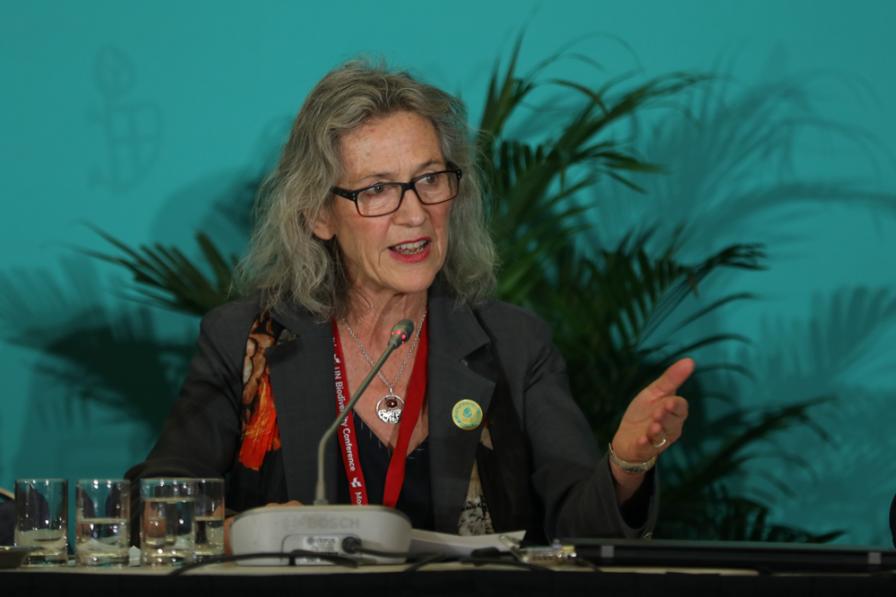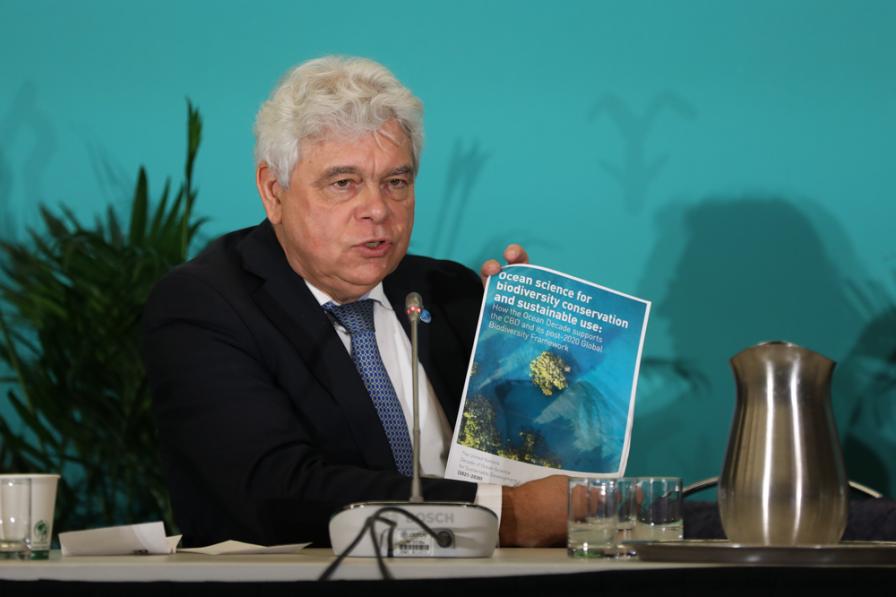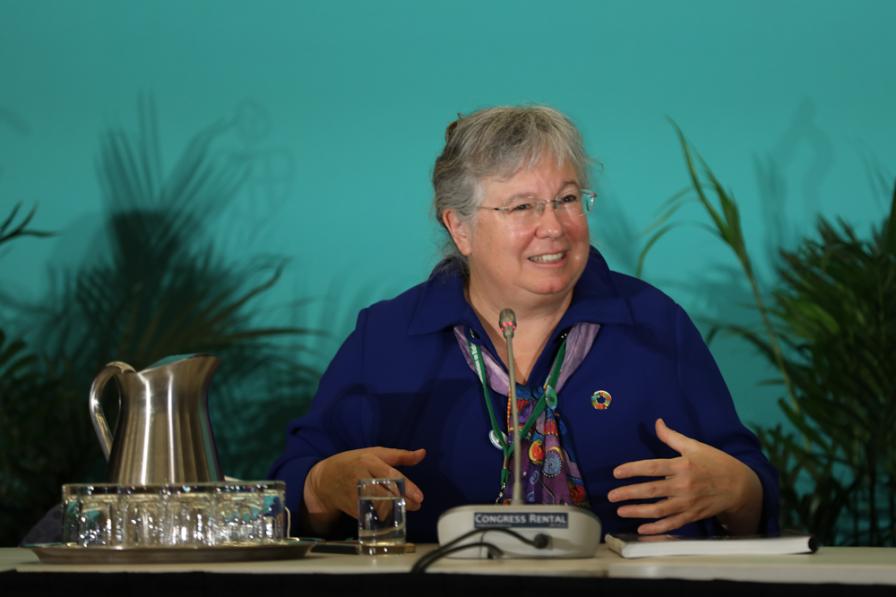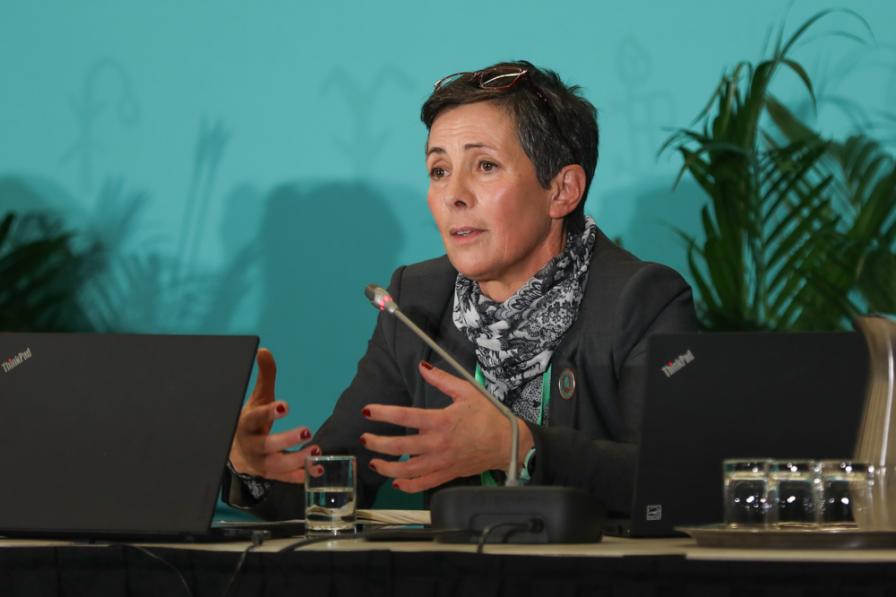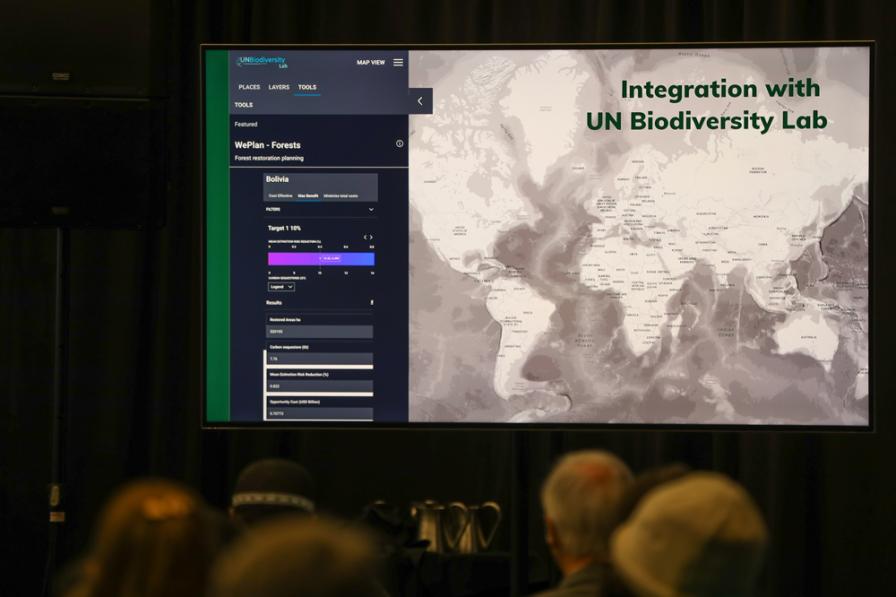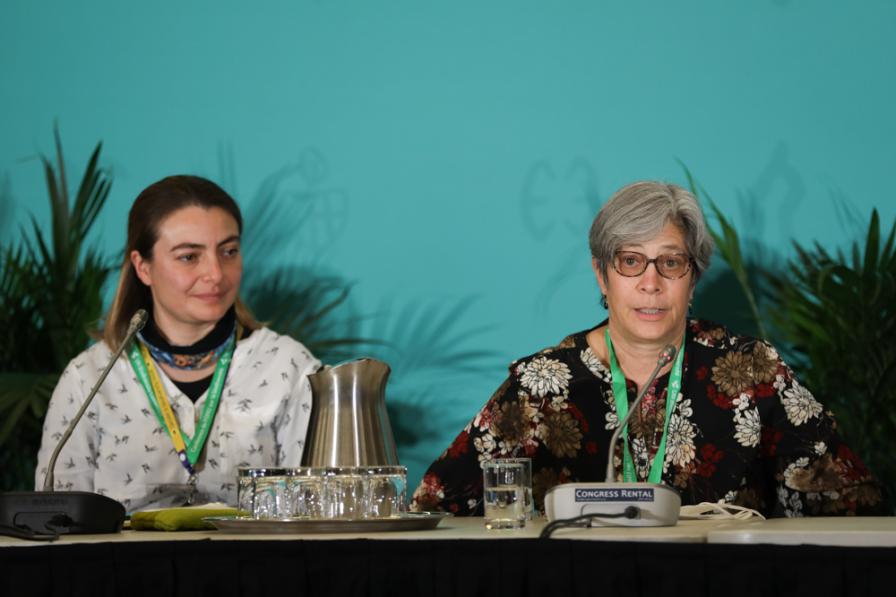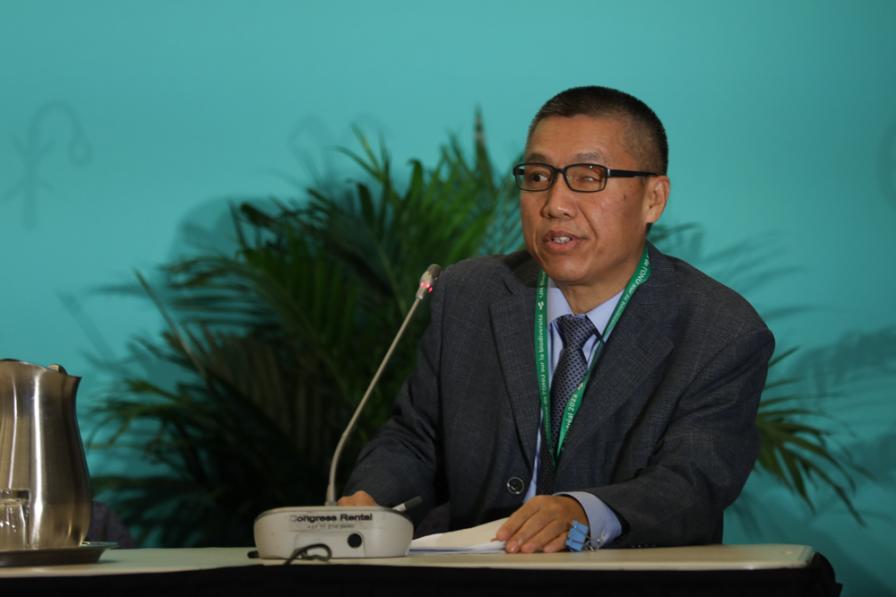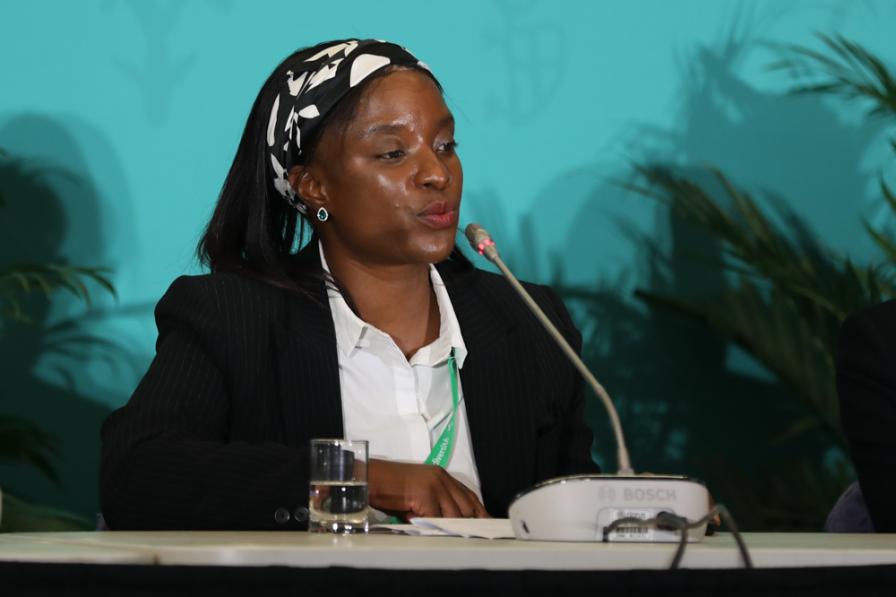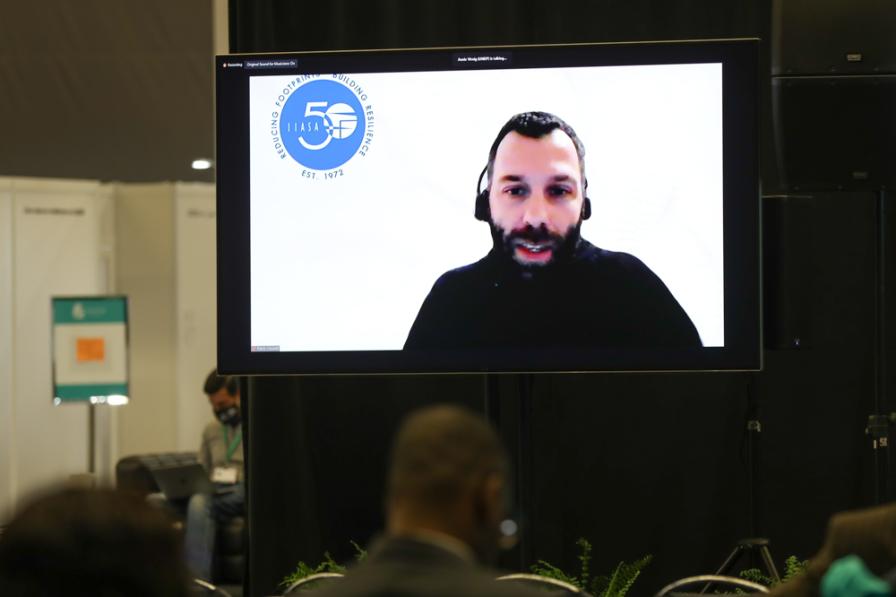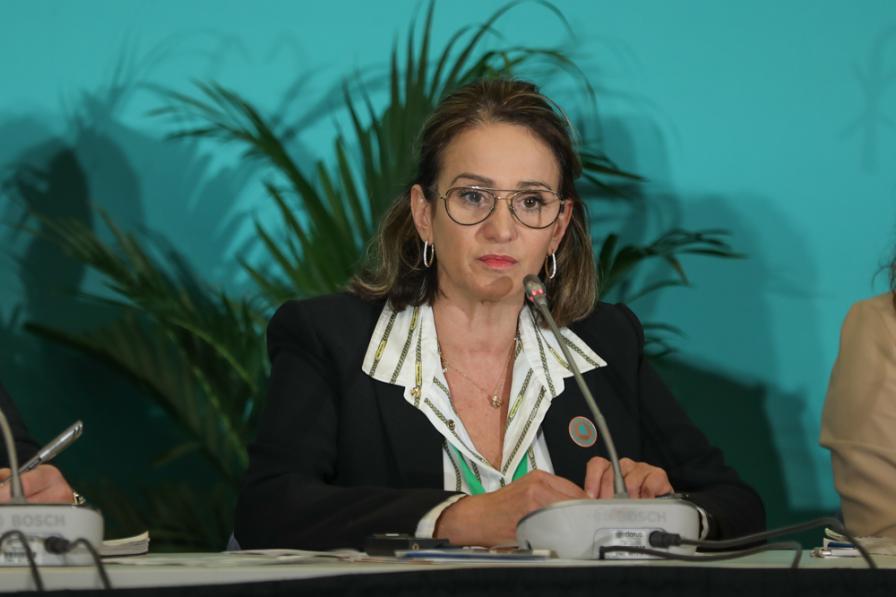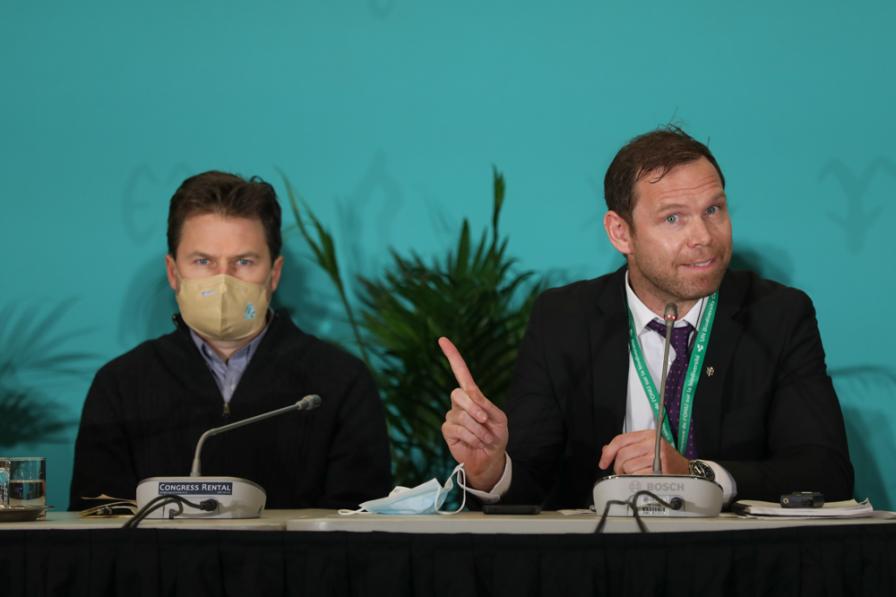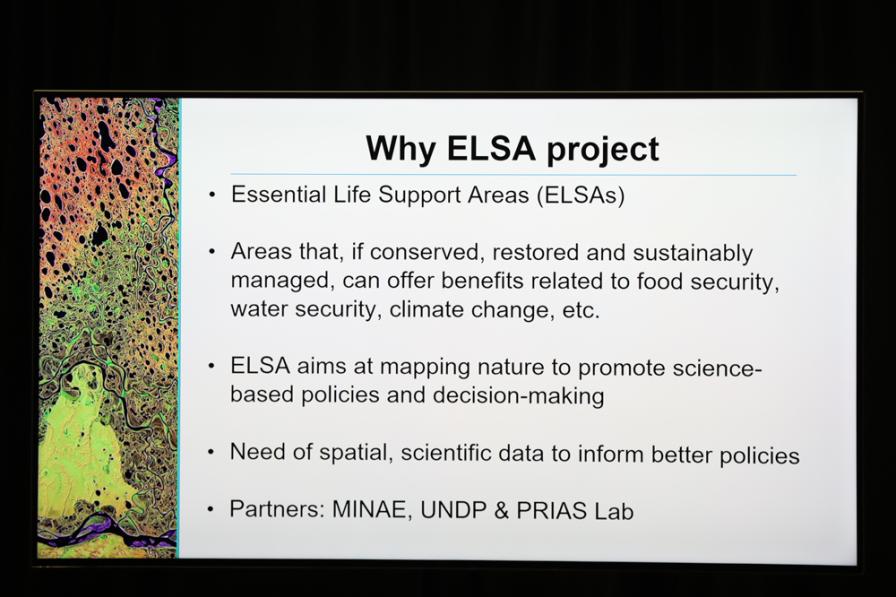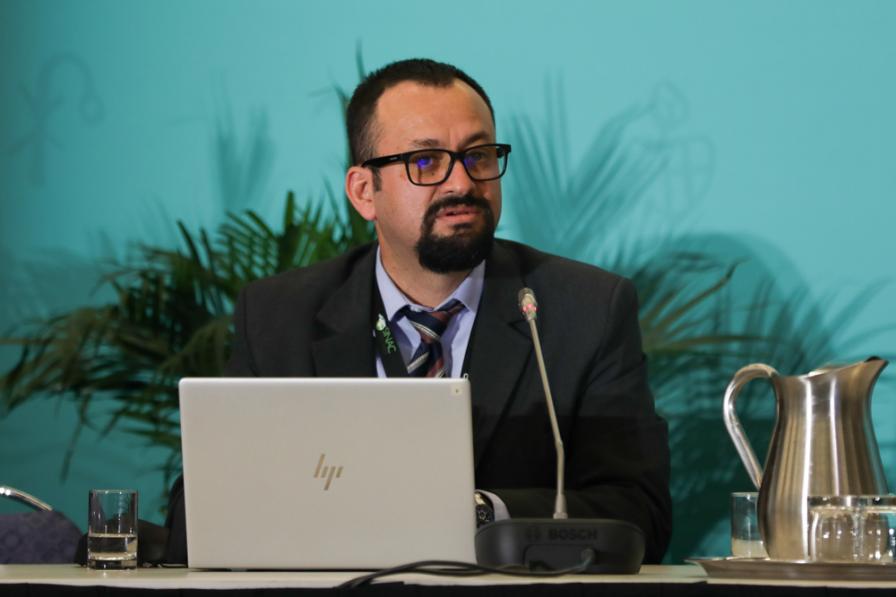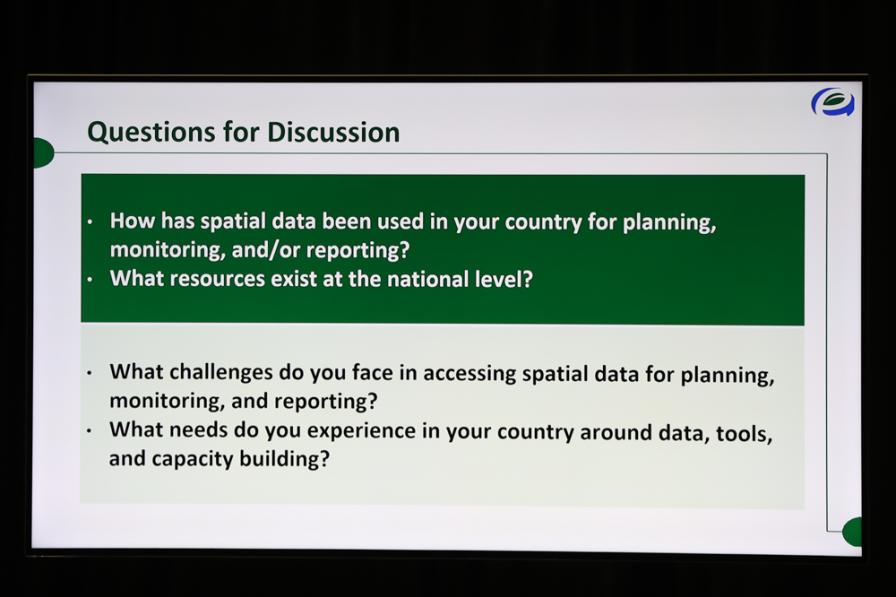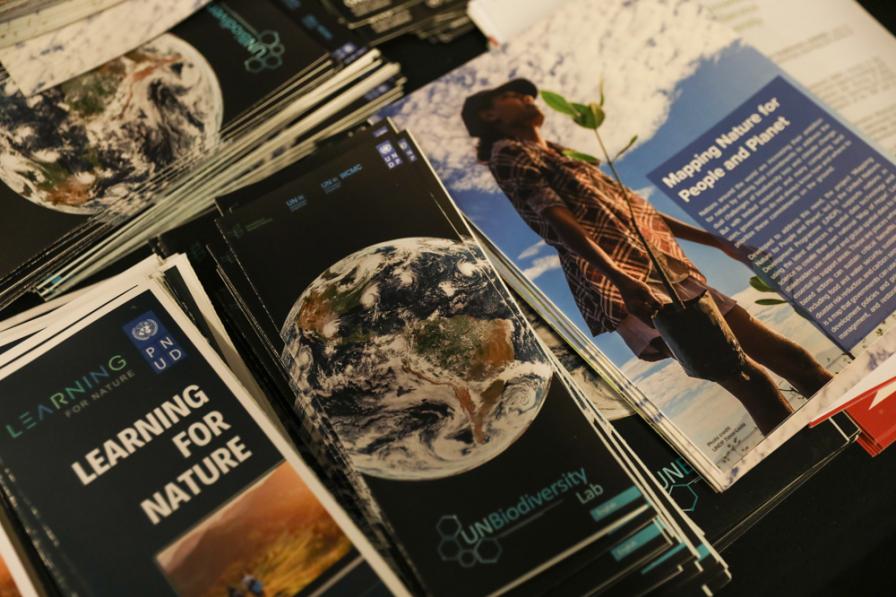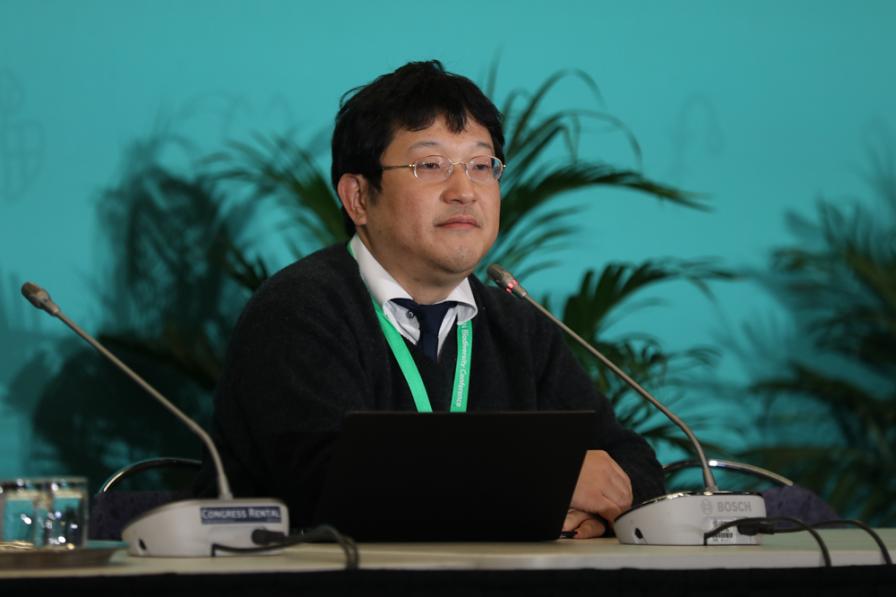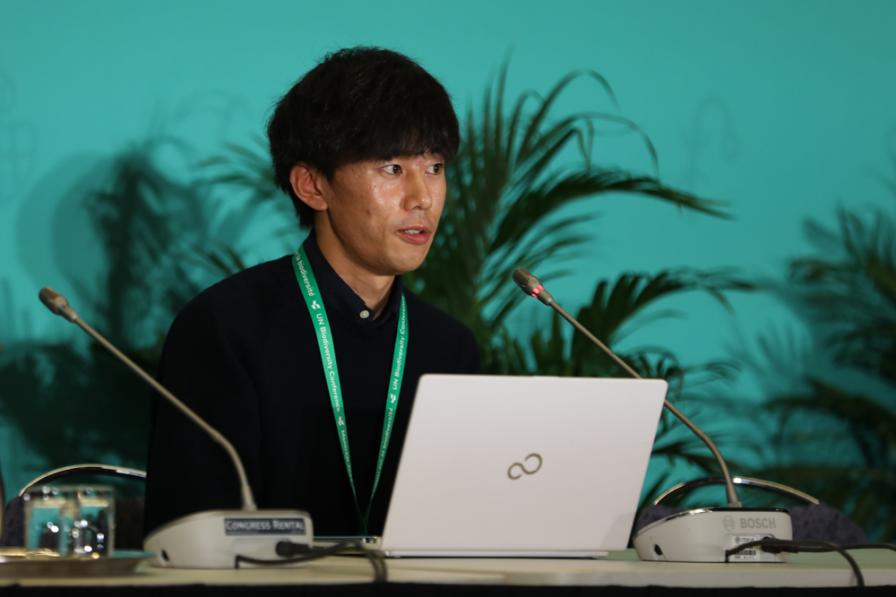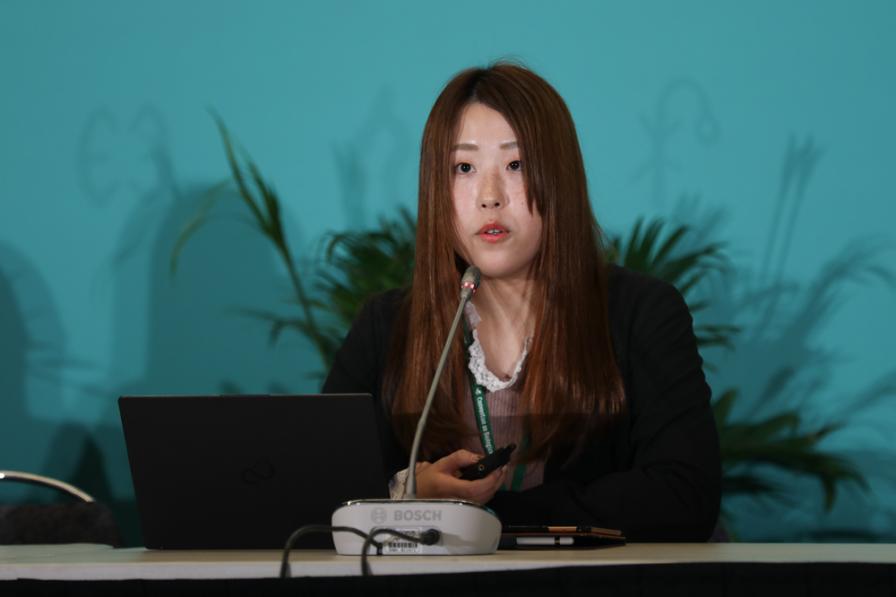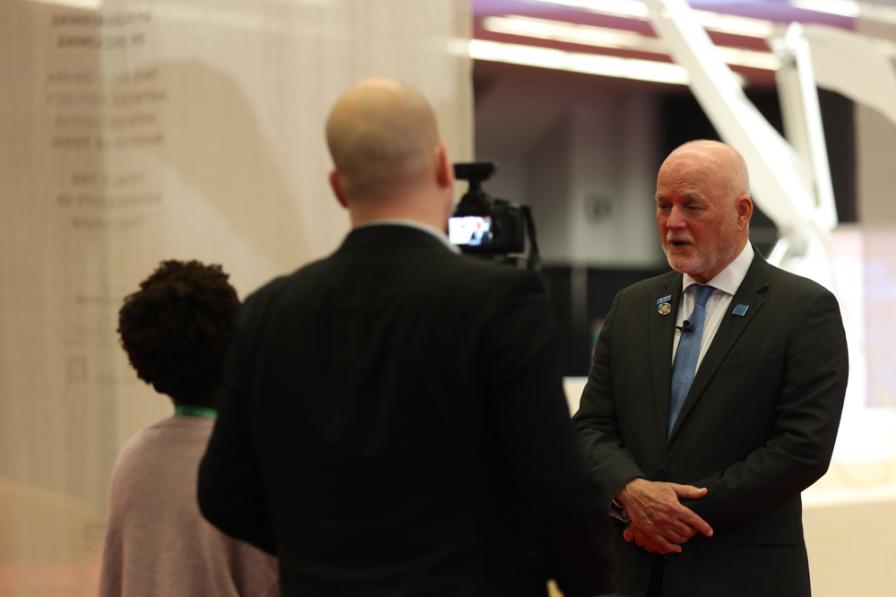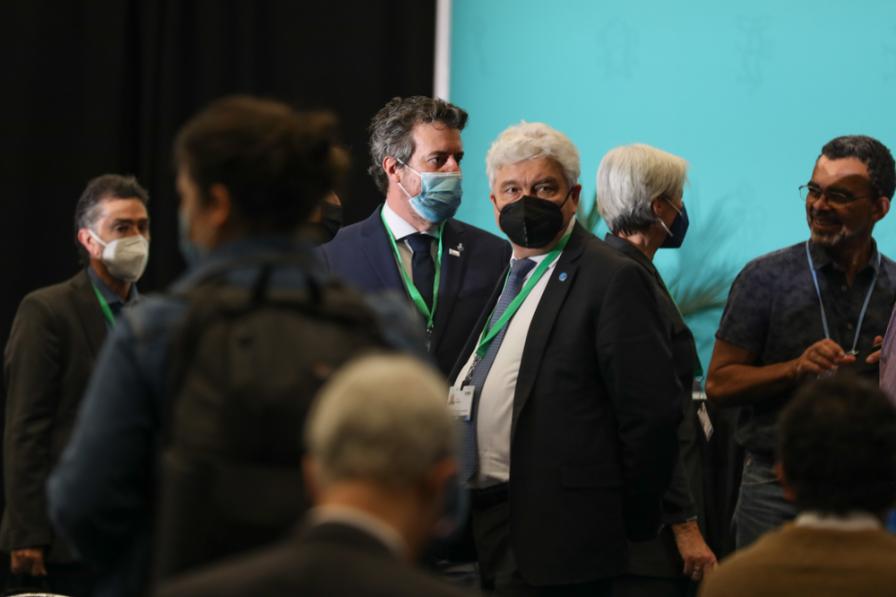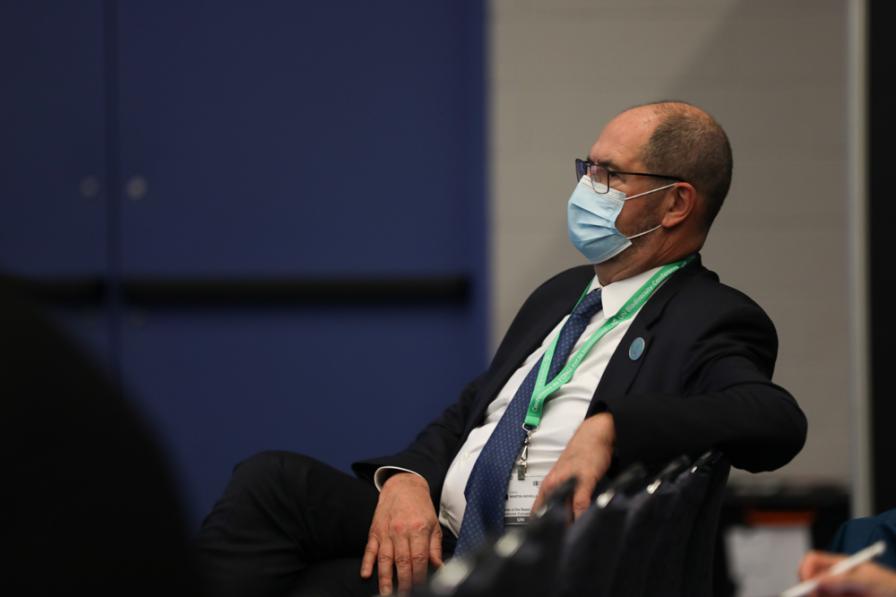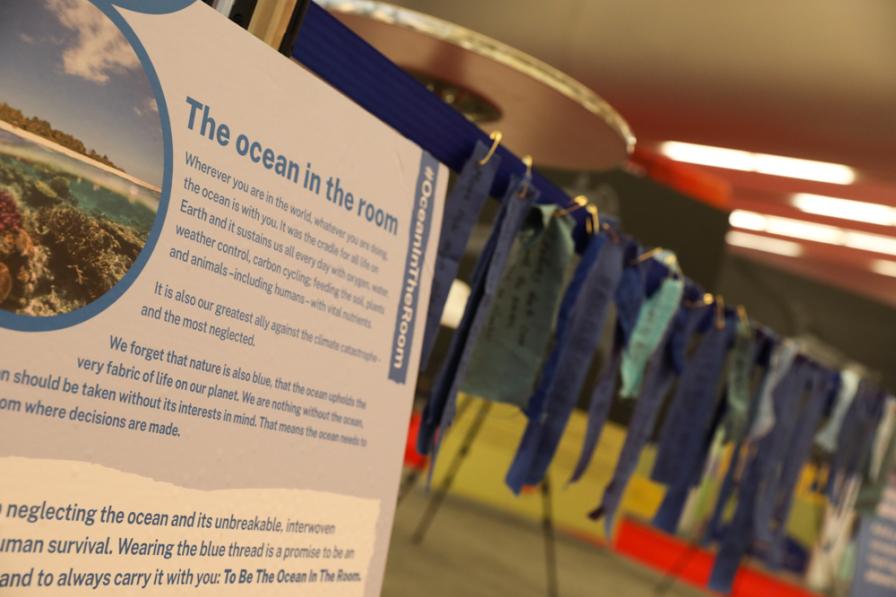Summary
The ongoing diversity of themes demonstrated the far-reaching issues and reach of the Rio Conventions. It underlined how integrative, coordinated opportunities can help overcome the environmental crises.
Rio Conventions Pavilion
The fourth day of the Rio Conventions Pavilion at COP 15 was dedicated to three themes: the Ocean, Spatial Data, and Intergenerational Dialogue for Strengthening Linkages between Biodiversity and Climate. The diversity of the themes demonstrated the far-reaching issues and reach of the Rio Conventions. It underlined how integrative, coordinated opportunities can help overcome the environmental crises.
An Ocean Life
Julian Barbière, Intergovernmental Oceanographic Commission of UNESCO (IOC-UNESCO), Coordinator of the UN Decade of Ocean Science for Sustainable Development, introduced the events’ focus on “the science we need for the Ocean we want,” as well as on Ocean solutions and conditions for their success.
Audrey Azoulay, Director-General, UN Environmental, Scientific and Cultural Organisation (UNESCO), warned that the Ocean’s function as the “blue lungs of the Earth” is under threat. She said the UN Decade of Ocean Science for Sustainable Development aimsto further Ocean protection, science, and awareness building, and called on delegates to affirm the essential role of the Ocean and place it higher on the international agenda.
Ambassador Peter Thomson, UN Secretary-General’s Special Envoy for the Ocean, recalled that the Ocean contain 80% of all life on Earth, warning: “We turn our backs on the Ocean at our own peril.” He called for COP 15 to embrace intergenerational justice and produce transformational targets that ensure a liveable future.
Thérèse Coffey, Secretary of State for Environment, Food and Rural Affairs, UK, emphasized her country’s commitment and leadership on nature and the Ocean. She highlighted the need for a global push with increased funds from all sources, pointing to the “10 Point Plan for Financing Biodiversity” the UK put forward with Ecuador, Gabon, and the Maldives.
In his keynote, David Obura, Founding Director, CORDIO East Africa, highlighted interlinkages between the post-2020 global biodiversity framework (GBF) and the UN Sustainable Development Goals (SDGs), calling for a focus on equity and people to help address these complex interlinkages and foster sustainable use.
Marine and Coastal Biodiversity Knowledge Needs for Policy and Society in the Context of the GBF
In this session, panelists from industry, private sector, and academia noted how critical it is to make science accessible and get broad stakeholder participation in order to advance marine and coastal biodiversity knowledge and action in the context of the GBF.
Speakers provided examples regarding how innovative technologies, open access, and open science have facilitated the sharing of data and information, as well as more frequent and iterative findings on Ocean biodiversity.
Some panelists called for further focus on Ocean literacy, noting: the deep sea remains the Earth’s least known and most species-rich ecosystems; and further refinement of databases, interoperability of data, and fit-for-purpose observing systems are key elements.
Solutions for Conserving and Restoring Marine Biodiversity in the Context of the GBF
This panel focused on key solution elements and enabling conditions in the context of the GBF, recognizing that progress depends on inclusivity. Speakers discussed the important role of technology, innovation, and cooperation, with examples including alternative methods of sampling and observation mediated by the Ocean Biomolecular Observing Network, innovative management solutions based on traditional ecological knowledge, and the world’s first mangrove project producing certified blue carbon credits in Colombia.
Panelists stressed the importance of a multisectoral perspective and changing the narrative for the Ocean, highlighting the “different elements of a party plate” for a sustainable Ocean plan currently under way in Mexico, and the role of other effective area-based conservation measures in marine fisheries.
The panel acknowledged the role of non-state actors in driving ambition within the fragmented Ocean government space, drawing attention to the “no Paris without Montréal declaration” signed by 87 organizations. To mobilize the necessary resources, panelists stressed the need to welcome responsible actors from the sustainable use space.
Priorities for Joint Action Across UN Conventions and Policy Processes
Heather Tallis, White House Office of Science and Technology Policy, stressed the need to endorse ambitious and coordinated Ocean solutions and strengthen the wide benefits that the Ocean provides.
Ignace Beguin, Ocean and Coastal Zones Lead, UN Framework Convention on Climate Change Climate (UNFCCC) Champions, noted how the Guardian news outlet just reported that the current draft GBF only mentions the Ocean twice; therefore, he said, this event at COP 15 is critical and timely. He added that net-zero targets cannot be achieved without nature considerations.
Olivier Poivre d’Arvor, Special Envoy of the President for the 2025 UN Ocean Conference, Ambassador for Poles and Maritime Affairs, France, highlighted how 2022 was a “super year” for blue diplomacy. He pointed out that the World Trade Organization reached a historic agreement in 2022 on illegal fishing and fishing of overexploited stocks and France and Costa Rica’s joint intention to co-host the third UN Ocean Conference in 2025.
Julian Barbière, UN Ocean Decade Global Coordinator, stressed the need to better understand the nature and scale of threats as well as the resilience of the Ocean. He also called for a critical assessment of where knowledge gaps persist.
High-level Closing
In this high-level closing of event, Espen Barth Eide, Minister for Climate and Environment, Norway, challenged calling this planet Earth since most of it is covered by the Ocean. He said a shift in mainstream thinking is needed to think of biodiversity not just on land but also in the Ocean. He applauded companies and investors present at COP 15 for challenging decision makers to raise ambitions and expressing their readiness to meet the challenge.
Joyce Murray, Minister of Fisheries, Oceans and the Canadian Coast Guard, Canada, noted her government’s commitment to Ocean health by investing billions of dollars over the last several years to protect the Ocean. She reminded participants that Vancouver will host the 5th International Marine Protected Areas Congress in 2023.
Vladimir Ryabinin, Executive Secretary, Intergovernmental Oceanographic Commission of UNESCO, implored delegates to return home with the advice provided at these dedicated Oceans sessions to adopt a more holistic approach to protecting our Ocean, and beginning work to make this a reality. He said advances in Ocean science have created historic conditions for protecting and managing the Ocean, which the GBF can further advance.
Harnessing the Power of Spatial Data to Take Early Action on the Post-2020 GBF
The afternoon session brought together representatives from international agencies, governments, academia, NGOs, and the private sector to present and discuss spatial data tools and platforms.
In opening remarks, Jamison Ervin, UN Development Programme (UND), illustrated how spatial data can transform national biodiversity strategy and action plans into policy relevant action pathways.
Corli Pretorius, UN Environment Programme World Conservation Monitoring Centre (UNEP-WCMC) , highlighted the role of spatialization in enabling a whole of government approach.
Spatial Data for Post-2020 GBF Planning
The discussion began with a presentation of China’s Eco-redline approach and platform that portrayed the Eco-redline as both a line in physical space and a line in the mind of policymakers.
The following panel introduced three spatial tools, WePlan, Natura Connect, and the UN Biodiversity Lab’s (UNBL) Essential Life Support Areas (ELSA), and their application in Colombia, the EU, and South Africa, showcasing how user-friendly decision support tools can help countries identify and prioritize nature action based on unique national context and targets.
Spatial Data for Monitoring and Reporting
This session introduced the following spatial data for monitoring and reporting tools: Essential Biodiversity Variables Portal; UNBL; National Environmental Information Systems; DART; and Target Tracker.
Presenters explained how these tools will help in national reporting with credible data and foster an environment of open science and access to data. GIZ presented the Mapeo tool, which is used by Indigenous Peoples, gives them an opportunity to own the data, and is accessible and useable by non-literate populations furthering inclusivity.
Spatial Data for Policy Coherence: Mapping Hope
The last session on Spatial Data showcased best practice examples of the UNDP-led “mapping nature for people and climate” project. Speakers from Chile, Colombia, Costa Rica, South Africa, and Uganda illuminated how they used the ELSA spatial planning tool to develop “maps of hope” that indicate where to protect, manage, and restore ecosystems to maximize benefits according to national priorities, lauding its support to science-based policy.
Intergenerational Dialogue for Strengthening Linkages between Biodiversity and Climate
The final part of the Pavilion for the day focused on the Japanese experience in mainstreaming awareness and action on biodiversity and climate change. Speakers provided examples of degraded coastal ecosystems in Japan and how local coastal communities have protected themselves by harnessing traditional knowledge.
Presentations noted that more scientific research is needed on the impacts of climate change and biodiversity loss with one speaker asking if the CBD should consider a “blue COP” focusing on issues such as the restoration of blue carbon ecosystems. Speakers also stated that untapped opportunities remain for youth the learn more about marine biodiversity.
A final panel addressed how adopting a circular economy can tackle both the climate and nature crises.
The Earth Negotiations Bulletin is covering the Rio Conventions Pavilion at COP 15 events from 13-18 December.
For more information: Rio Conventions Pavilion at COP 15
All ENB photos are free to use with attribution. For the CBD COP 15 Rio Conventions Pavilion, please use: Photo by IISD/ENB | Kiara Worth.
To receive free coverage of global environmental events delivered to your inbox, subscribe to the ENB Update newsletter.
An Ocean Life: Knowledge and Solutions for Marine and Coastal Biodiversity under the Post-2020 Global Biodiversity Framework

Panel speakers during the session on marine and coastal biodiversity knowledge needs (L-R): Steven Dickinson, TotalEnergies; Malu Nunes, Executive Director, Boticario Group Foundation; Steve Widdicombe, Director of Science, Plymouth Marine Laboratory; Paul Snelgrove, Memorial University of Newfoundland; Anya Waite, Scientific Director and CEO, Ocean Frontier Institute; Fae Sapsford, Sargasso Sea Commission; Ellen Stofan, Under Secretary for Science and Research, Smithsonian Institution; and Julian Barbiére, Coordinator of the UN Decade of Ocean Science for Sustainable Development
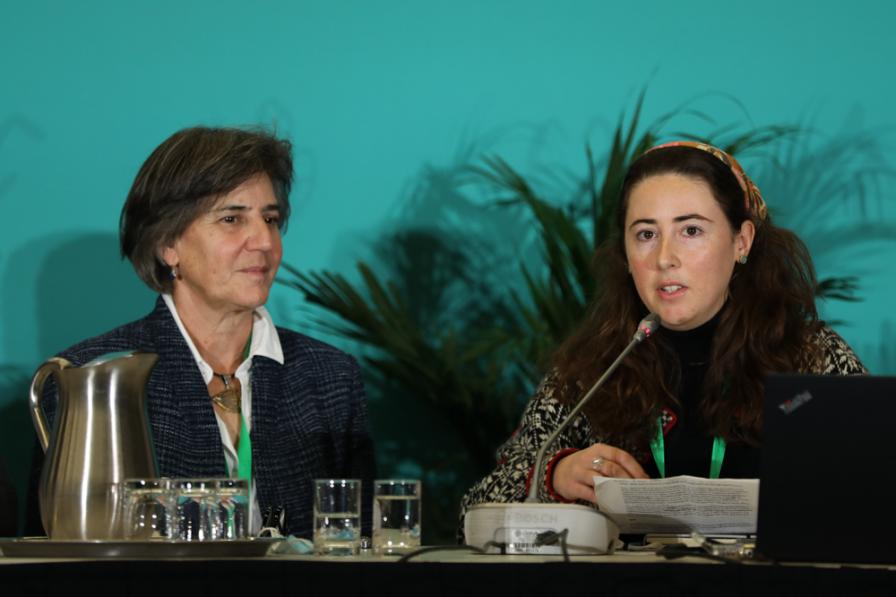
Anya Waite, Scientific Director and CEO, Ocean Frontier Institute, and Fae Sapsford, Sargasso Sea Commission

Steve Widdicombe, Director of Science, Plymouth Marine Laboratory, and Paul Snelgrove, Memorial University of Newfoundland
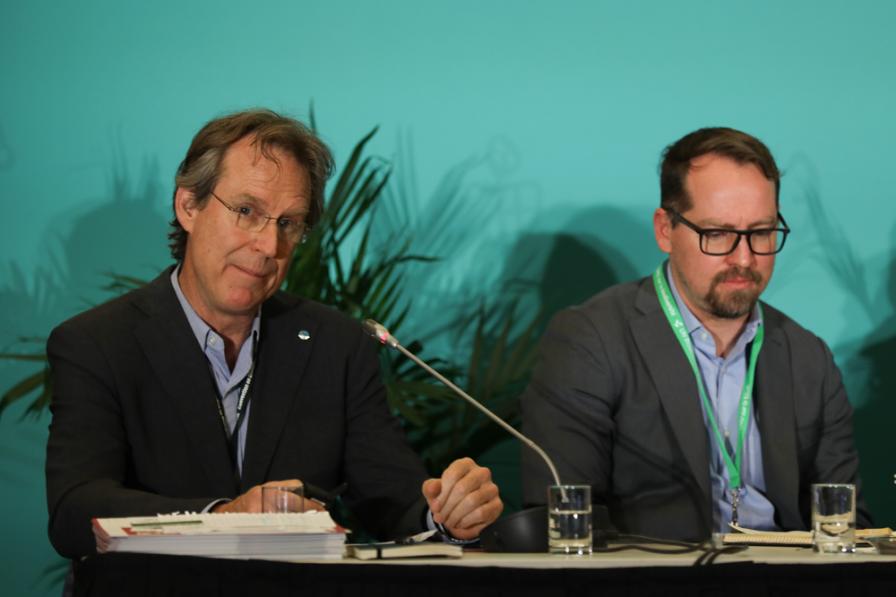
Kim Friedman, Marine and Inland Fisheries Division, FAO, and Andrew Rhodes, Special Envoy for Oceans attached to the Undersecretary for Multilateral Affairs and Human Rights, Mexico

Loreley Picourt, Executive Director, Ocean and Climate Platform, and Francisco Armando Arias-Isaza, General Director, Marine and Coastal Research Institute “José Benito Vives de Andreis”
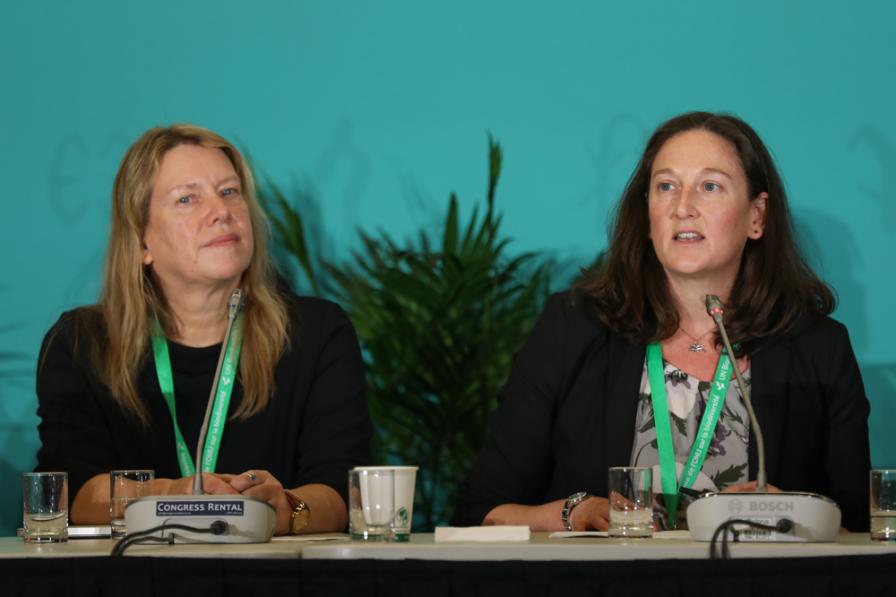
Marjo Vierros, Director, Coastal Policy and Humanities Research, UN DESA, and Alice Ortmann, Fisheries and Oceans, Canada
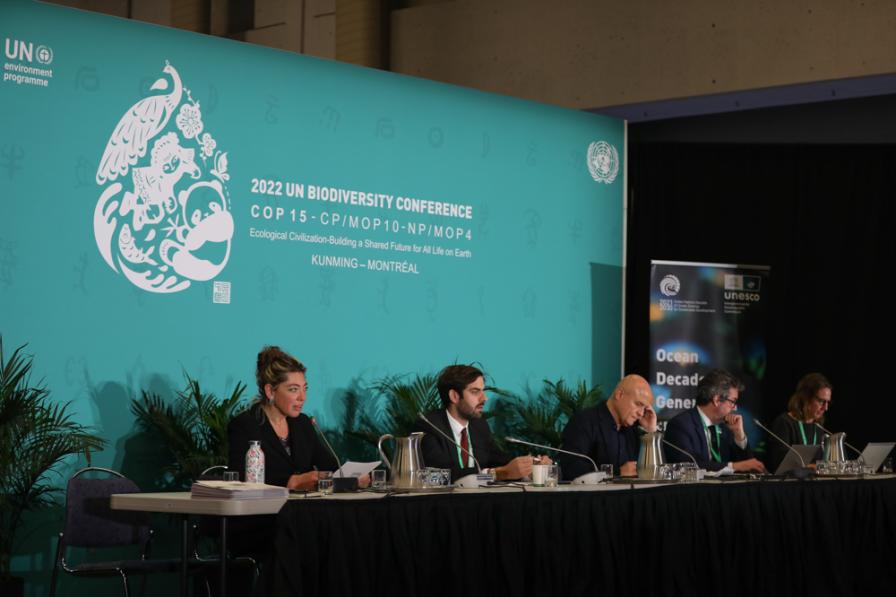
Panel speakers for priorities for joint action across UN conventions and policy processes to 2030 (L-R): Heather Tallis, White House Office of Science and Technology Policy, US; Ignace Beguin, Ocean and Coastal Zones Lead, UNFCCC Climate Champions; Olivier Poivre d’Arvor, Special Envoy of the President for UN Ocean Conference 2025; Julian Barbière, Coordinator, UN Decade of Ocean Science for Sustainable Development; and Alison Clausen, Intergovernmental Oceanographic Commission, UNESCO
Harnessing the Power of Spatial Data
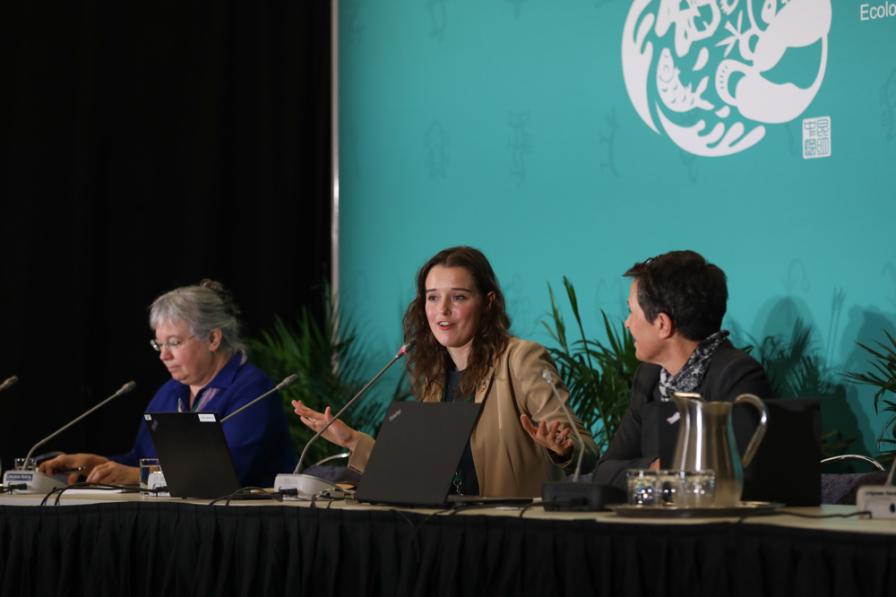
Panel speakers for the opening session (L-R): Jamison Ervin, UNDP; Anne Virnig, UNDP; and Corli Pretorius, Deputy Director, UN Environment Programme World Conservation Monitoring Centre (UNEP-WCMC)
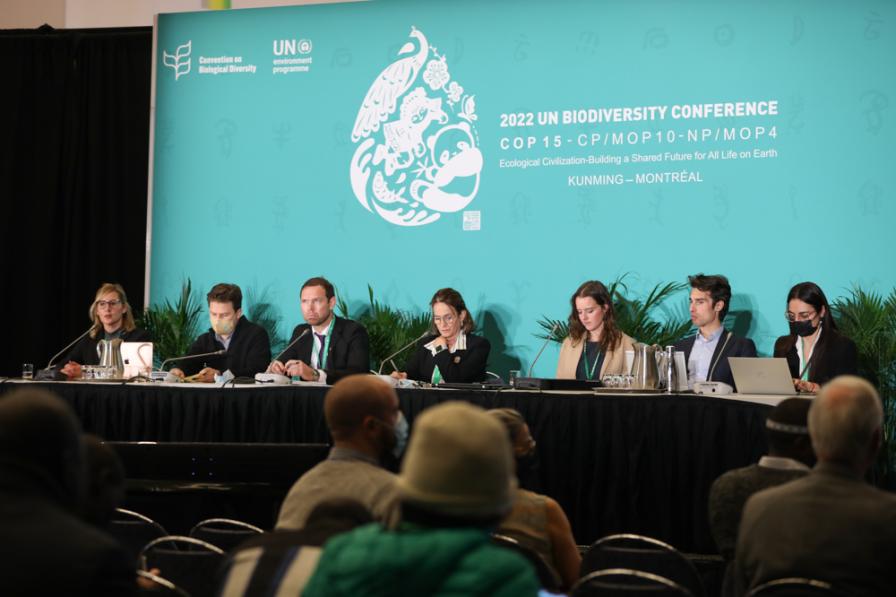
Panel speakers for the session on spatial data for monitoring and reporting (L-R): Christina Supples, UNDP; Terence Hay-Edie, UNDP; David Oswald, Founder and President, DE Design and Environment; Diane Klaimi, UNEP; Anne Virnig, UNDP; Maxime Eiselin, Ministry of Agriculture, Nature and Food Quality, the Netherlands; and Daniella Guaras, UNEP-WCMC
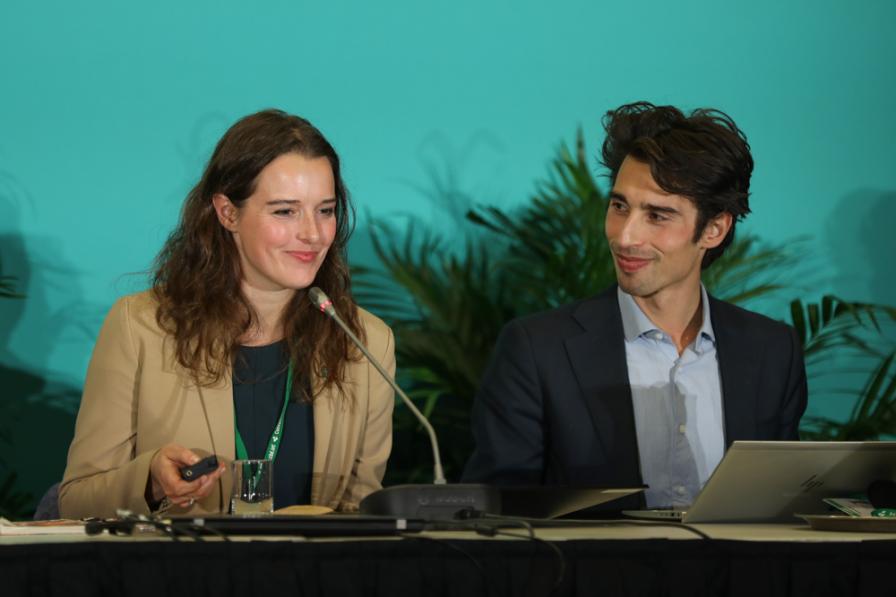
Anne Virnig, UNDP, and Maxime Eiselin, Ministry of Agriculture, Nature and Food Quality, the Netherlands


